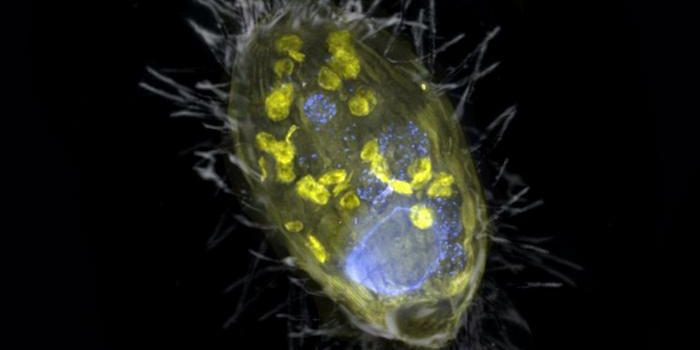Chickenpox Virus Gets an Unusual Boost From the Immune System
Many of us experienced chickenpox as kids. The illness, which typically causes fever, headache, appetite loss, and an itchy, bumpy, red rash, is caused by Varicella zoster virus (VZV). Even though we usually get over that rash within about ten days without medical intervention, the virus is not completely eliminated from the body. It can remain dormant for decades, and reemerge to cause shingles many years later. Shingles can be far more severe and painful than chickenpox and can lead to serious complications.
VZV can initially enter the body through the airways, then move to the mucous membranes and tissues in the nasopharynx and lymph nodes. Once there, it can infect immune cells called T lymphocytes. The virus can then move all over the body, using the infected T lymphocytes for transportation. After it reaches skin cells, it can cause chickepox. After reaching neurons, it can remain dormant there for many years.
The body fights VZV with various immune mechanisms, including signaling molecules known as interferons. But new research has shown that the virus can actually manipulate one of those immune mechanisms; instead of weakening the virus, the interferons are used to VZV's advantage. The findings have been reported in Nature Communications, and they might aid in the development of novel therapeutics against VZV, and potentially other viruses as well, the researchers suggested.
A viral protein expressed by VZV called glycoprotein C can attach to interferon gamma. Once bound, the signals that are sent by interferon are altered, which leads to an increased in the level of certain proteins, such as intercellular adhesion molecule 1, explained first study author Dr. Carina Jacobsen.
This is how interferon gamma can promote cell adhesion during VZV infection, and T cells then bind to infected skin cells more easily. This helps transfer the virus from skin cells as well as to immune cells. The virus uses the T cells as a kind of cloak to get where they want.
Now, researchers will be able to use this new data to develop new approaches to battle VZV infectons and their complications. However, VZV also only affects humans. So the researches used a special type of mouse that could model the movement of T cells infected with VZV. Thus, more research will be needed to confirm these findings in humans.
Sources: Medizinische Hochschule Hannover, Nature Communications









